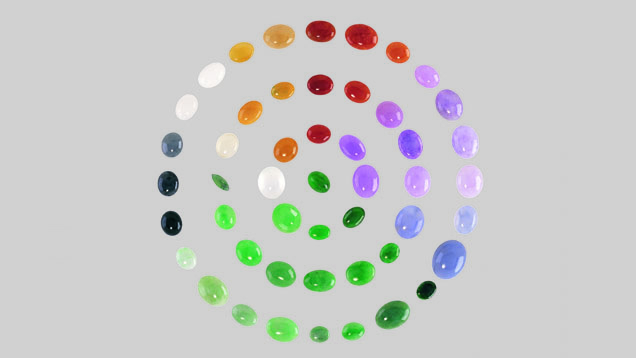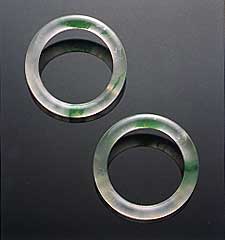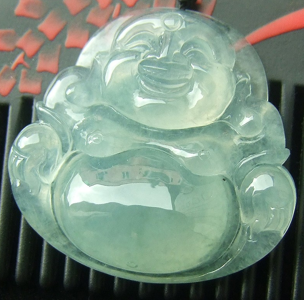There is no common grading system for jadeite in the market. 4C2T1V model is widely adopted in China and Hong Kong:
- Color
- Clarity
- Cutting
- Cracks
- Transparency
- Texture
- Volume
In the world of GIA, color, transparency and texture are the 3 most important quality factors in determining jadeite’s value.
COLOR
Generally, jadeite buyers will consider judging the stone’s color under both fluorescent and incandescent light sources. They will check its level of transparency and even look for coloration or mottling, referred to as streaks that resemble veins or plant roots. They will evaluate the stone’s polish to seek any distorted surface reflections. They will also look at clarity because any fractures can impact the jadeite’s value.
Going by the books of GIA, color would be the most important value for jadeite. Traditionally associated with the green color, jadeite comes in other colors as well!
Image credit: GIA
The finest quality jadeite is semitransparent with even, vivid emerald-green color. This imperial green is pure and penetrating, without any hint of gray and its hue is so intense even from a distance. The renowned “Imperial jade” is one of the world’s most expensive gems, commanding millions of dollars in the marketplace.
Image credit: Sotheby’s
Jadeite gets its green from chromium, the same color-causing element that causes the green in some emeralds. Its green can range from pure green to a slightly bluish green or a slightly yellowish green. Another highly valued jade variety is the “kingfisher jade,” a green that is only slightly less vivid than imperial. There’s also an intense yellowish green “apple jade.” “Moss-in-snow jade” will be one that is translucent white with bright green veining. Outstanding examples of these are almost always bought and sold in the Asian market. The best specimens can cost more per carat than high-quality diamonds!
Image credit: Sotheby’s
Lavender is jadeite’s second most valued factor. Intense and highly saturated hue commands a substantial premium over the paler colors or those that look too blue. While lavender is less valuable than top-green jadeite, its higher qualities can worth much more than the lower quality green hues.
Jadeite occurs in black color, but black color is more common in nephrite. Black jadeite is usually carved. Around year 2000, black jadeite from Guatemala began a following among jewelry designers and buyers.
Jadeite buyers and sellers prize uniform color – hue, tone and saturation – throughout the stone. Often, jadeite with uneven color distribution is much more common. Blotches, known as mottling, or streaks that resemble veins or plant roots, may appear on the jadeite. These surface patterns are known in the trade as “variegated” and “moss-in-snow.”
Image credit: WorthPoint
Such surface characteristics tend to lower the value of jadeite. However, if the markings are sharply defined and contrast intensely against the stone’s main bodycolor, such as green veins on white, the mottled jadeite can be an attractive and valuable piece.
TRANSPARENCY
The best jadeite is semitransparent. To judge transparency, some buyers place the jadeite slice on a printed page, and if they can see the print clearly even through a dark green jadeite, they have a good quality jadeite.
Sometimes, good transparency can make up for the lack of uniform color or low saturation. These bangles, semitransparent with light green mottling, sold for USD116,000 in 1999 at Christie’s Hong Kong auction. This price is traditionally reserved for fine green or lavender jadeite.
Image credit: Christie’s and Tino Hammid
TEXTURE
Texture has an intimate relationship with transparency. The finer the texture, the higher the transparency. Depending on the crystal size and hardness, jadeite can be categorized into:
- Old mine (老坑) – finest texture
- Relatively old mine (舊坑) – medium texture
- New mine (新坑) – coarsest texture
Comparatively, old mine finer-grained jadeite shows higher transparency, takes a better polish and luster.
Image credit: lgjade.com






